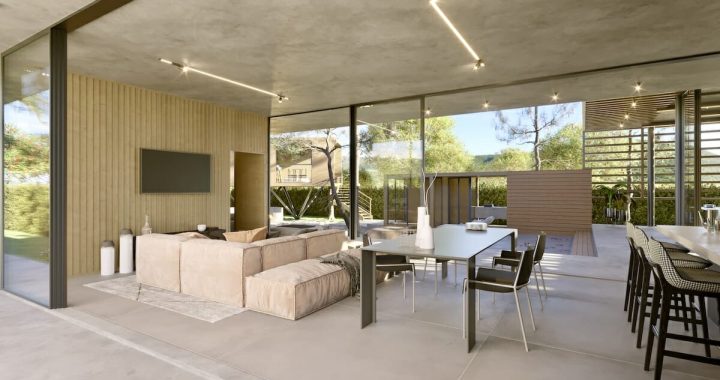The Impact of Home Decor on Mood and Well-Being

Our homes are more than just physical spaces; they are sanctuaries that influence our emotions, thoughts, and overall well-being. The way we decorate and design our living spaces has a profound impact on our mood, mental state, and quality of life. In this article, we will delve into the fascinating connection between home decor and our emotional well-being, exploring how thoughtful design choices can create environments that nurture our happiness and contribute to a positive state of mind.
Color Psychology:
Colors have the remarkable ability to evoke emotions and affect our mood. Warm tones like reds and oranges can stimulate energy and excitement, while cool blues and greens promote calmness and relaxation. Thoughtfully incorporating the right colors into different areas of your home can create a harmonious balance and influence your emotions positively.
Natural Light and Serenity:
Ample natural light not only enhances the aesthetic appeal of a space but also has a profound impact on our mood. Exposure to natural light triggers the release of serotonin, a neurotransmitter that contributes to feelings of happiness and well-being. Designing spaces that maximize natural light can lead to increased feelings of serenity and contentment.
Biophilic Design for Connection:
Biophilic design, which incorporates natural elements into indoor spaces, fosters a sense of connection with nature. The presence of indoor plants, natural textures, and views of outdoor landscapes can reduce stress, enhance cognitive function, and contribute to an overall sense of well-being.
Organization and Clutter Control:
A cluttered and disorganized living space can create feelings of stress and overwhelm. On the other hand, an organized and tidy environment can promote a sense of calm and control. Implementing effective storage solutions and decluttering regularly can create a more peaceful and harmonious atmosphere.
Personalization and Sentimental Items:
Decorating your home with items that hold sentimental value or reflect your interests can create a sense of nostalgia and comfort. These personal touches remind us of cherished memories and experiences, elevating our mood and contributing to a positive emotional state.
Cozy and Comforting Textures:
Texture plays a significant role in our sensory experience. Incorporating cozy and comforting textures, such as soft rugs, plush cushions, and tactile fabrics, can create a sense of physical comfort that translates into a feeling of overall well-being.
Mindful Design for Mindfulness:
Mindful design involves creating spaces that encourage mindfulness and relaxation. Incorporating meditation corners, soft lighting, and calming colors can help you unwind and alleviate stress, promoting emotional equilibrium.
The Power of Scents:
Aromatherapy through scents like lavender, citrus, or eucalyptus can have a direct impact on mood and relaxation. Scented candles, diffusers, or fresh flowers can infuse your space with soothing fragrances that positively influence your emotional state.
The connection between home decor and mood is a powerful one. Our living spaces have the ability to shape our emotions, influence our mindset, and impact our overall well-being. By incorporating elements that promote positive emotions, relaxation, and comfort, we can create environments that support our mental health and contribute to a happier and more fulfilling life. Thoughtful design choices that consider color, light, texture, and personalization can transform our homes into havens of emotional well-being, ultimately nurturing a more balanced and joyful state of mind.
 The Harmonious Home: Balancing Aesthetics and Functionality in Decor
The Harmonious Home: Balancing Aesthetics and Functionality in Decor  Finding Your Style: A Guide to Choosing Home Decor that Reflects You
Finding Your Style: A Guide to Choosing Home Decor that Reflects You  Small Changes, Big Impact: Quick and Affordable Home Decor Updates
Small Changes, Big Impact: Quick and Affordable Home Decor Updates  Home Decor Trends to Watch: What’s In and What’s Out
Home Decor Trends to Watch: What’s In and What’s Out  From Blank Canvas to Personal Haven: The Journey of Home Decor
From Blank Canvas to Personal Haven: The Journey of Home Decor  Transforming Your Home: The Power of Thoughtful Interior Design
Transforming Your Home: The Power of Thoughtful Interior Design  10 Exciting DIY Home Projects to Transform Your Living Space
10 Exciting DIY Home Projects to Transform Your Living Space  Beyond Four Walls: Embracing Nature for Home Inspiration
Beyond Four Walls: Embracing Nature for Home Inspiration  Remodeling Rhythms: Crafting Harmonious Living Environments
Remodeling Rhythms: Crafting Harmonious Living Environments